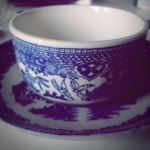For many collectors of transferware, Spode china is the gold standard. There are niche areas of collecting like flow blue or specific eras. But, Spode has been in business since 1770 and Josiah Spode, the company’s founder, is known for having perfected a technique to flawlessly transfer patterns onto ceramic underglaze, as well as having started the process developing the formula for bone china that was finished by his son. This formula went on to be used in much of the world’s bone china factories.

Following a decline in popularity, Spode moved much of it’s transfer process out of England and customers noticed the difference. While the original factory is no longer in production, Spode production has once again been moved back to Stoke-on-Trent, England, where many of the beautiful types of vintage and antique transferware we love have been made for centuries.
Before Spode came into hard times, the production process was still contained in England. In 2009 the company was bought by Portmeirion Group and in 2012 the Spode Museum Trust was opened to give visitors a chance to see how these types of designs were created by hand in the olden days.
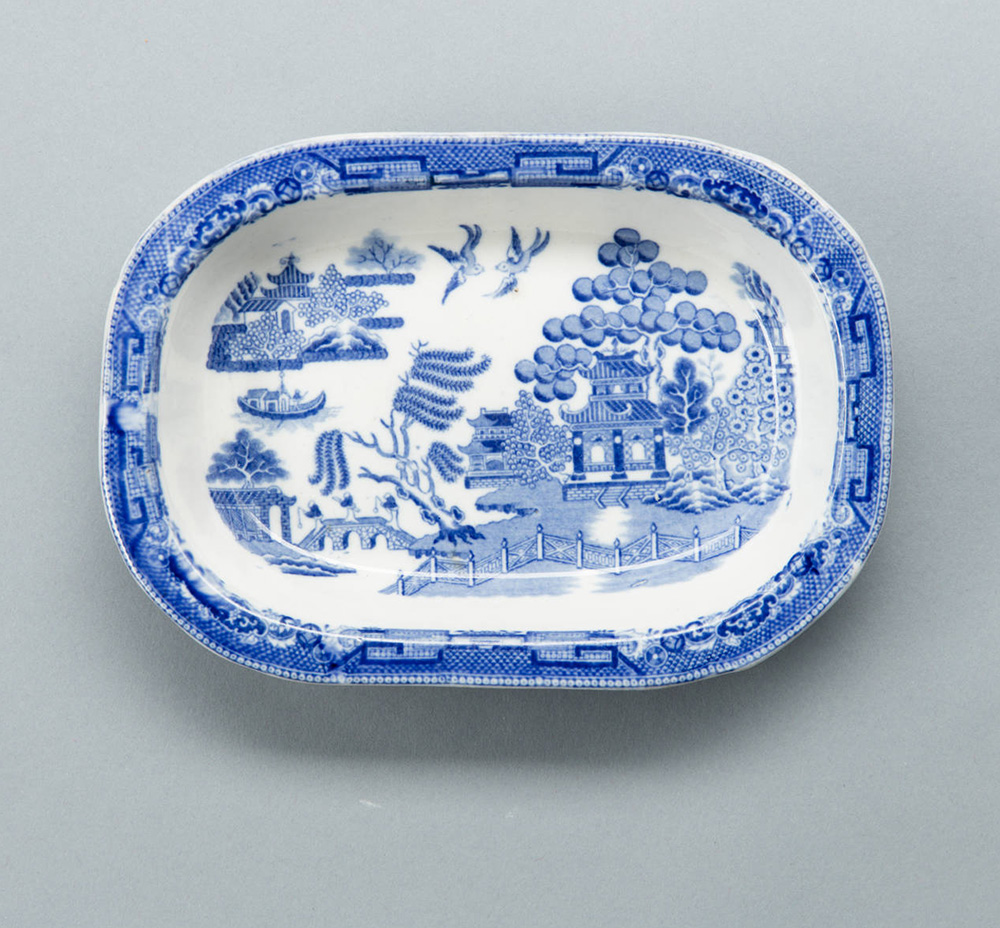
The process starts with a metal plate that’s been engraved with the correct pattern and is set on a hot plate. The pigment for the is then spread evenly over the design for several minutes to ensure a proper transfer. Various tools are used to ensure that the color glaze is spread into every area of the designs before the excess is scraped off.
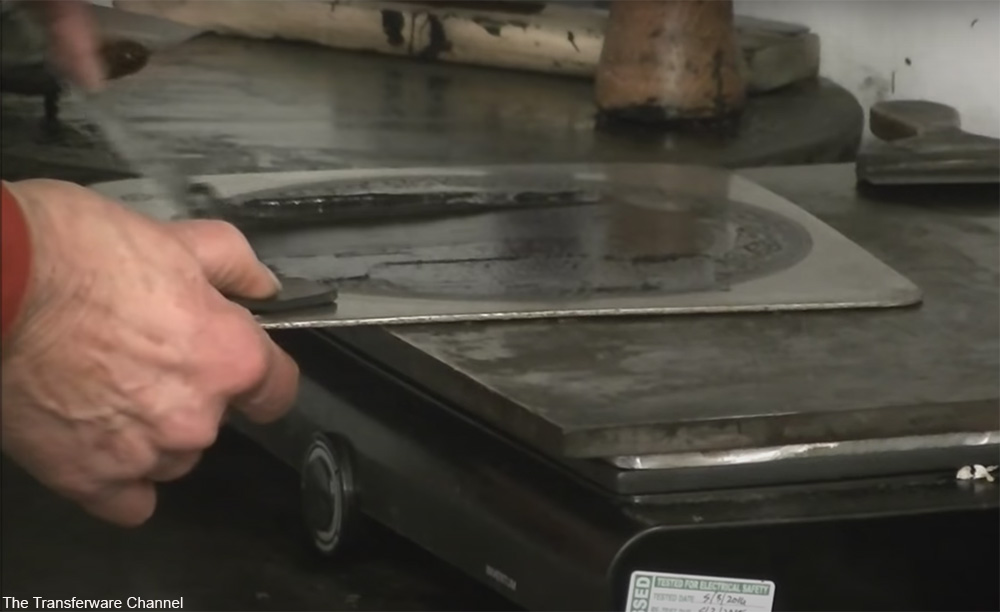
Next a special paper is used to pick up the pattern and then both the paper and copper plate are run through a press. Then a painstaking process of placing it just so on the china piece begins. Any slip of the hand or misjudgment of spacing could result in a defective piece.
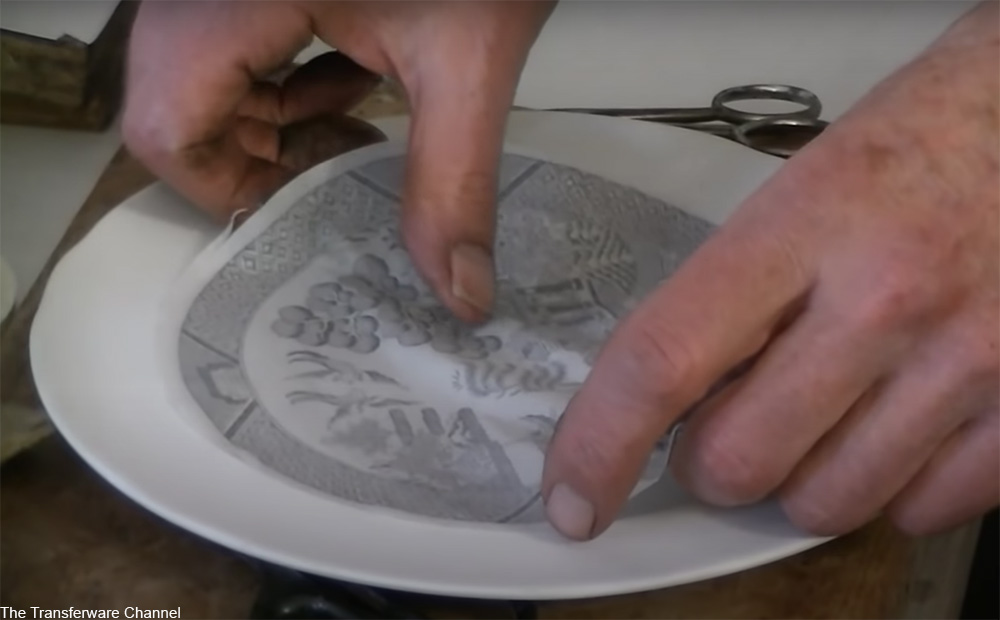
Given the complexity of the process, it’s no wonder that some of these pieces didn’t come cheap. However, before transferware, the process of decorating china was done completely by hand and this is the main reason why fine china had historically only been available to the extremely wealthy.
By contrast, most pieces of pottery today are printed by machine. Although an engraved metal plate is still used to create the design, the process is nearly entirely automated and relies on a flexible silicone stamper to actually commit the colored glaze to the pottery piece.

For two-color pieces of transferware made the old fashioned way (like blue willow), the process was complete once the design was placed to perfection. However, any edging, shading, or gilding was done by hand as the finishing touch. This meant that, long before machines took over the process, customers could have an element of the rich life in their cupboards at a fraction of the cost of hand-painted china.
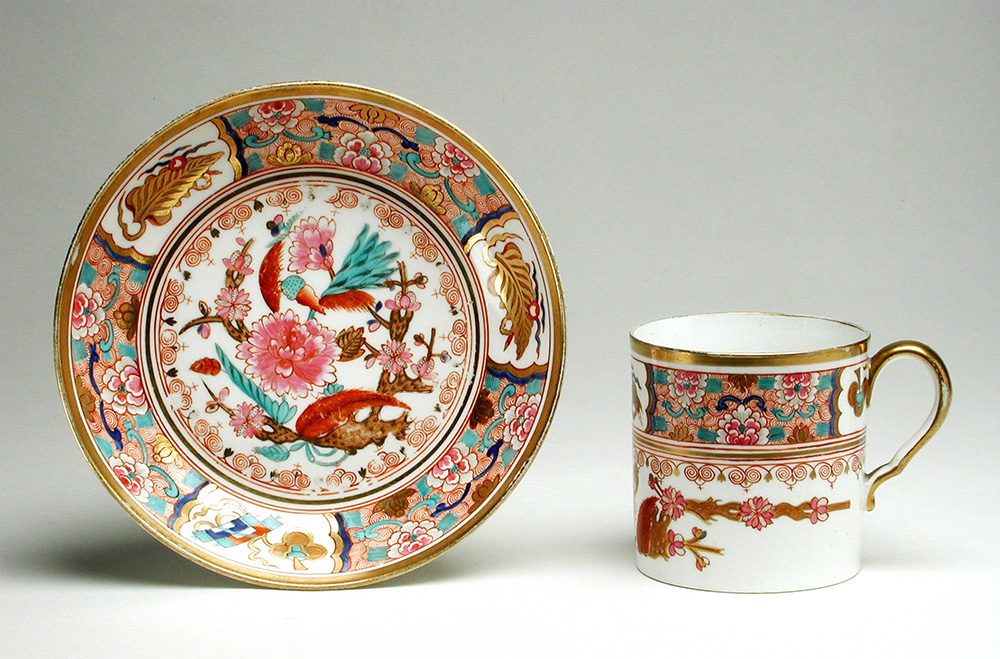
You can see exactly how transferware was done by hand in the video below. It’s incredible how steady of a hand this job requires! If you’ve ever seen any mistakes in antique transfer, this video gives a clear view of how that could have happened at any point in the many steps process.













